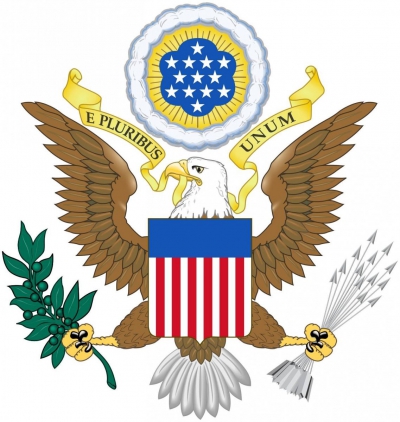The Second Bank of the United States was the second federally authorized Hamiltonian national bank in the United States. Located in Philadelphia, Pennsylvania, it was chartered from February 1816 to January 1836. The Bank's formal name, according to section 9 of its charter as passed by Congress, was "The President Directors and Company of the Bank of the United States". While other banks in the US were chartered by and only allowed to have branches in a single state, it was authorized to have branches in multiple states and lend money to the US government.
A private corporation with public duties, the Bank handled all fiscal transactions for the U.S. Government, and was accountable to Congress and the U.S. Treasury. Twenty percent of its capital was owned by the federal government, the Bank's single largest stockholder. Four thousand private investors held 80% of the Bank's capital, including three thousand Europeans. The bulk of the stocks were held by a few hundred wealthy Americans. In its time, the institution was the largest monied corporation in the world.The essential function of the Bank was to regulate the public credit issued by private banking institutions through the fiscal duties it performed for the U.S. Treasury, and to establish a sound and stable national currency. The federal deposits endowed the Bank with its regulatory capacity.Modeled on Alexander Hamilton's First Bank of the United States, the Second Bank was chartered by President James Madison in 1816 and began operations at its main branch in Philadelphia on January 7, 1817, managing 25 branch offices nationwide by 1832.The efforts to renew the Bank's charter put the institution at the center of the general election of 1832, in which the Bank's president Nicholas Biddle and pro-bank National Republicans led by Henry Clay clashed with the "hard-money" Andrew Jackson administration and eastern banking interests in the Bank War. Failing to secure recharter, the Second Bank became a private corporation in 1836, and underwent liquidation in 1841.
The federal government of the United States (U.S. federal government or U.S. government) is the national government of the United States, a federal republic in North America, composed of 50 states, a federal district (District of Columbia, where the government is based), five major self-governing territories and several island possessions. The federal government is composed of three distinct branches: legislative, executive, and judicial, whose powers are vested by the U.S. Constitution in the Congress, the president and the federal courts, respectively. The powers and duties of these branches are further defined by acts of Congress, including the creation of executive departments and courts inferior to the Supreme Court.

1816Apr, 10
The Federal government of the United States approves the creation of the Second Bank of the United States.
Choose Another Date
Events on 1816
- 20Feb
The Barber of Seville
Rossini's opera The Barber of Seville premieres at the Teatro Argentina in Rome. - 10Apr
Second Bank of the United States
The Federal government of the United States approves the creation of the Second Bank of the United States. - 22May
Ely and Littleport riots of 1816
A mob in Littleport, Cambridgeshire, England, riots over high unemployment and rising grain costs, which spreads to Ely the next day. - 5Aug
Electrical telegraph
The British Admiralty dismisses Francis Ronalds's new invention of the first working electric telegraph as "wholly unnecessary", preferring to continue using the semaphore. - 14Aug
Cape Colony
The United Kingdom formally annexes the Tristan da Cunha archipelago, administering the islands from the Cape Colony in South Africa.

 English
English  español
español  français
français  português
português  русский
русский  العربية
العربية  简体中文
简体中文 